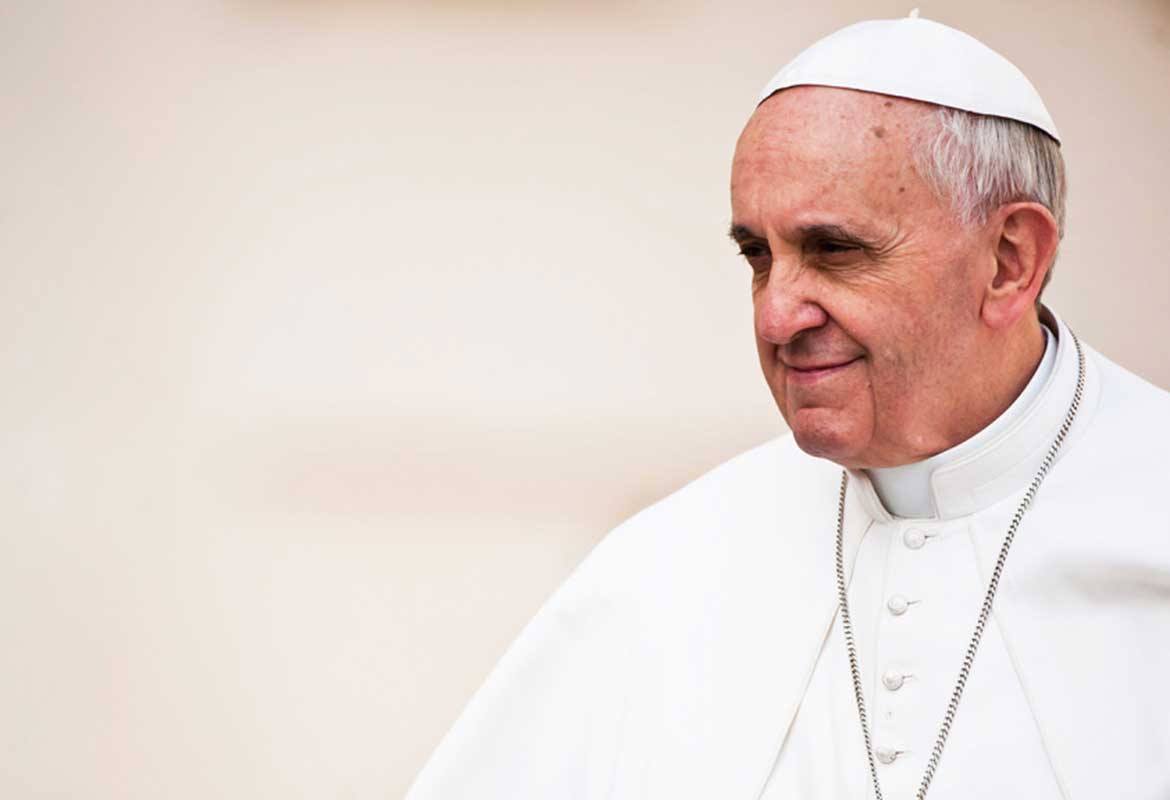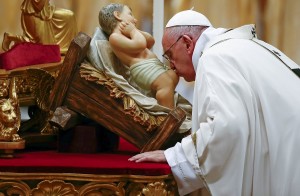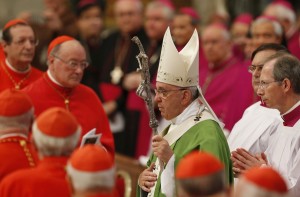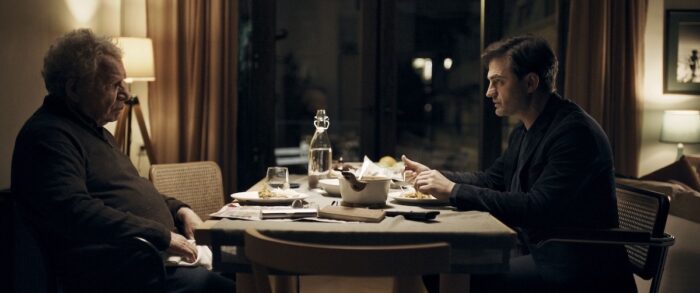The Holy See: Is Its Sovereignty Under Attack?

The trial that began last week in the Vatican over “the passing on of classified documents” represents the strongest ever defense of its state sovereignty by the Holy See. This defense comes along at a good time. At the same time that this trial was beginning, the Holy See spoke in Geneva before a UN Committee on the Convention for the Elimination of Every Racial Discrimination in order to explain and defend its sovereignty. During these same days, Pope Francis finally (and personally) ended the era of external consultants in the Vatican.
Some pieces of history
Over the years, the Holy See’s sovereignty has been under attack many times. The Holy See exercises its sovereignty within a small territory called the “Vatican City State”. In this way the Holy See has an international status that allows it a seat at the table of nations. This status has always been acknowledged and appreciated: the apostolic nuncio (the Holy See’s ambassador) enjoys the “right of precedence” as dean of the diplomatic corps in some countries of central and western Europe, and of most countries of central and southern America, as well as in a few countries elsewhere.
This sovereignty is not a privilege. It is one of the means by which the Holy See carries on its mission. When the Kingdom of Italy was established in the late 19th century, it was decided that Rome should be the Italian capital. The secret goal – as documented by the Italian historian Angela Pellicciari – was to take away the pope’s temporal power. The conquest of Rome in 1870 thus marked the end of the Papal States, and it deeply weakened the Holy See’s diplomacy.
Nevertheless, the Holy See continued to maintain its diplomatic network, and kept on working for peace and the common good. However, it did so without the support of an internationally acknowledged territory. The situation generated some difficulties, as the Holy See’s diplomatic relations depended greatly on Italian diplomatic ties.
For instance, when Italy broke diplomatic ties with Germany during the First World War, the Holy See lost its connection in Rome with Germany, as the German embassy in Rome was closed. This is the reason the Holy See to this day never agrees to allow the same ambassador to be accredited simultaneously to itself and to Italy.
On the one hand, the secularizing trends that brought the loss of the Papal States were “providential” – as Benedict XVI put it in his 2011 speech in Freiburg. On the other hand, the Holy See needed to find a way to exercise its mission in the diplomatic arena.
The establishment of Vatican City State
In 1929, the Fascist government signed the Lateran Pacts, also with the attempt to mark a distance with the previous administrations, mostly against the concession of a territory to the Holy See. The Holy See – in addition to a financial compensation – obtained “that piece of land needed to exercise our mission” (in Pope Pius XI’s words) and refused offers for a larger territory.
After the agreement was signed, the Holy See started to build the “Vatican City State”. A great part of the buildings within the city-state were built at that time. Vatican City State was also provided with a juridical framework. The State adopted the Italian penal code and the penal procedural code. These codes remained the fundamental laws of Vatican State, even after Italy adopted a new code in 1933. The Holy See made the political decision to keep the “liberal” penal code, and not to adopt the new, fascist-oriented one. This latter remains today as the Italian penal code.
This historical perspective answers one of the objections made last week about the charges introduced by the Vatican against five individuals for leaking confidential documents. In making use of an old penal code the Vatican is making a political choice, one that is opposed to dictatorship. It is a choice for freedom. It is also noteworthy that the Vatican has updated its juridical framework, while retaining its basic specifications. The latest reform of the Vatican penal code was decreed by Pope Francis in July 2013. The reform included many international conventions that the Vatican had ratified, and introduced the crime of the theft and passing on of confidential news and documents. This is the charge at the trial.
It is not a trial against the freedom of the press. The fact that some of the leaked information was published is not part of the investigation or charge. Their publication was simply linked to the way the documents were obtained.
Have the Vatican ever applied a censorship?
In fact, one can look back in history and see that Vatican has never applied any sort of judicial censorship. Over the many years that there have been harsh press reports about alleged Holy See financial speculations, reporters have never been sued by the Vatican for defamation; instead, in every case responses came only from the Holy See Press Office.
In two seasons of media attacks over clerical sex abuse, many of the reports remained suspended. When the accusations were true, the Holy See paid compensations and suffered the loss of faithful. But, when it defended itself in judicial trials, the Holy See always maintained a single line of argument: the Holy See is a sovereign State, and the vast majority of priests in the world are not subject to its civil legislation. Priests are subject to canon law, but that is different. So one cannot indict the Pope or the Secretary of State in the event that a priest commits child abuse. The Vatican is not a company with a CEO and a president.
This misunderstanding pervades the current Vatican trial. The trial is intended to defend the integrity of the Vatican State. Documents leaked and passed on are confidential documents of the State. The investigation started long before the publication of the two books filled with details. The publication of the books, however, gave the Vatican investigators the certainty that documents were robbed. The Secretariat of State sued the leakers. These are the basis of the trial. That some of the people involved were journalist is just an accident. They are involved not because of the publication of the leaks, but because of the way the obtained the leaks.
Is it just a Vatican trial?
The leakers would be charged even under Italian law. According to the Italian penal code, art. 262, “whoever reveals news, of which the public authority has forbidden disclosure” is sentenced to “not less than 3 years imprisonment.” Freedom of the press and information is suspended in that case.
Even European laws concerning freedom of information take the same limits into account. The European Convention on Human Rights establishes (art. 10) that “everyone has the right to freedom of expression,” and that this include “freedom to hold opinions and to receive and impart information and ideas without interference by public authority and regardless of frontiers.” But – the article goes on – “the exercise of these freedoms, since it carries with it duties and responsibilities, may be subject to such formalities, conditions, restrictions or penalties as are prescribed by law and are necessary in a democratic society, in the interests of national security, territorial integrity or public safety, for the prevention of disorder or crime, for the protection of health or morals, for the protection of the reputation or rights of others, for preventing the disclosure of information received in confidence, or for maintaining the authority and impartiality of the judiciary.”
Considering this, it is surprising that OSCE (Organization of Security and Cooperation in Europe) intervened in the question and asked the Vatican to adapt itself to European standards of press freedom. Even more surprising, as this is not a trial that concerns freedom of the press. Once more, the Vatican is defending the State, not attacking the freedom of the press.
Some objections to the current Vatican trial
One objection might be that the Vatican reacted quickly but only once there was a leak of documents, while it did not charge anyone over the graver crimes, especially the financial crimes denounced in the two books. But a glance at the data shows that this objection is groundless.
Concerning financial scandals, the most recent case under the spotlight was that of Msgr. Nunzio Scarano. An accountant at the Administration for the Patrimony of the Apostolic See (APSA), Msgr. Scarano is currently under house arrest. He was arrested because he allegedly masterminded the transfer of 20 million euros in cash from Switzerland to Italy aboard a government plane. He is also under investigation for alleged money laundering. In 2009 he withdrew 580,000 euros from his account in the IOR and used the money to pay off a mortgage for a house he owned in Salerno, in southern Italy.
Vatican investigators moved in quickly. Msgr. Scarano’s funds were immediately frozen – the Holy See Press Office reported on July 9, 2013 – and the Vatican submitted its first ever international request (a rogatory letter) to Italy. According to information from the Vatican tribunal, the Vatican has always cooperated with Italian requests of this kind, with the exception of those cases in which the Vatican itself was conducting an internal investigation. On the Italian side, the (belated) responses concerning Scarano’s case were the subject of comments (without any direct reference) made by the Vatican’s Public Prosecutor during the 2014 ceremony for the inauguration of the judiciary year. According to the Vatican prosecutor, the responses “were not only incomplete, as they left out some important items,” but they also “showed that evidence had been collected in a way that can be described as improper and not in line with international standards.”
The Vatican sent Italy another rogatory letter. This letter was sent while the Vatican was investigating Giampietro Nattino, the Italian banker who owned an account with APSA. Nattino allegedly used that account to buy stocks he owned, an action that constituted insider trading. Vatican justice moved quickly, though in a confidential way. But the news of the investigation came out during Vatileaks 2, and it sounded like a rebuke from the Vatican. In the midst of the scandal, someone in the Vatican wanted to make public the murky business that certain Italians were conducting behind Vatican walls. The Vatican eliminated this murkiness step by step, and the case against Nattino was one of the outcomes of this commitment by the Vatican. So, why has this news disappeared in the media, while the trial over the leaking of classified documents still generates a certain media frenzy?
Another of the objections to the trial is that instead of charging journalists, it would have been better had the Vatican investigated the scandals which the disclosed documents reveal. But in fact, those documents originate with the external consultants that the Holy See (and the Pope personally) had hired to carry on what was an already ongoing process of reform. If those documents were drafted, it was because the Vatican had wanted these consultants to continue the reform. Prior to the appointment of the external consultants, however, that reform was already being carried out by the “hidden Vatican”, while newspapers, filled with those who wanted to talk about scandals, ignored this earlier reform effort.
It is apparently not by chance that the Italian Bishops Conference’s newspaper “Avvenire” recently published a diplomatic dispatch drafted by Jacques Maritain, then French ambassador to the Holy See right after the Second World War. The Church was then living through the last years of Pius XII’s pontificate, and was moving toward a new model (the Second Vatican Council was about to happen), even from the organizational point of view.
The dispatch made the point that the Church’s finances and administration were “obsolete,” though the administration was not “morally corrupted.” The real issue – the dispatch went on – was that the administration “was designed to meet the needs of a time when good will and good faith were enough to make a prelate with no preparation capable as a manager to carry on administration; a time when the Church, impoverished by the series of revolutions that brought it to the loss of the Papal States, handled few resources and operated in a context where international exchanges – economic, financial and monetary – were not as complicated as they were after the Second World War.” The dispatch also stressed that there was the need for a reorganization in order to carry forward the mission of the Church.
Vatican City State, a young State who made several steps forward
In the end, Vatican City State is a young State, and it is only now settling down. While it was still in a more “collaborative” phase, the Holy See enjoyed the help of some individuals, but was also being exploited.
In this very moment, Vatican City State has been strengthened, and so, too, the Holy See’s international profile. Vatican City State is no longer a State with privileged relations with its cumbersome Italian neighbor, but a modern State respected by other countries. This was the final goal of Benedict XVI’s reform that Pope Francis inherited. How these reforms will be appreciated by Europe will be assessed in the upcoming week, when the Holy See will present the second progress report on its finances to the Council of Europe’s MONEYVAL Committee. Until now, Europe has always given positive responses.
However, the character of the State is not just misunderstood, it is also ignored. For as far as finances are concerned, the Holy See is described more as a company that should be cleaned up than as a State with its own particular system. This is the way that the Vatican State itself is put into question.
How the Vatican City State is put into question
At the same time, the Vatican State is being put into question increasingly at the international level. The Holy See has signed many UN conventions, and it has often been among the first signatories so that it could foster the development of international principles. When a country signs a UN Convention, it must report on its implementation of the Convention, and the UN Committee also gives suggestions. Nothing is binding. But in terms of the Vatican, these Committees often turn into a sort of “lay inquisition”.
This is what happened when the Holy See reported to the Committee for the Convention on the Rights of the Child. The Committee attacked the Holy See for allowing clergy pedophilia, and it subtly asked for a change in canon law, while it also described the practice of sacramental Confession as a “regime of silence.”
The same script was followed by the Committee for the Convention Against Torture. And the same script is going to be followed in these upcoming days. The Holy See just reported about its progress in implementing the Convention for the Elimination of Every Racial Discrimination.
This the reason that Archbishop Silvano Maria Tomasi, Holy See Observer to the United Nations in Geneva, began his report with an in-depth explanation of the distinctions between the Holy See, the Catholic Church and Vatican City State. The Holy See – Archbishop Tomasi said – “as a member of the international Community, is related but is separate and distinct from the territory of Vatican City State, over which it exercises sovereignty. Its international personality has never been confused with the territories over which it has exercised State sovereignty.”
The Holy See “implements” basic principles and authentic human rights as recognized in the Convention in the territory of the Vatican City State (“Vatican City State was established in 1929 to ensure more effectively the absolute and visible independence of the Holy See, and to guarantee its indisputable sovereignty for the accomplishment of its worldwide moral, spiritual and religious mission”).
Archbishop Tomasi then explained that the Catholic Church “spread throughout the world, over which the Holy Father as Bishop of Rome exercises religious authority in accordance with canon law, is a spiritual society composed of those persons who, by their own choice, freely adhere to the doctrines, morals, sacraments and discipline on religious practices proposed by the Catholic Church.”
Archbishop Tomasi specified that “the Holy See has a religious authority,” but it recognizes “the jurisdiction of the national authorities where members of the Catholic Church are located or reside,” and so “it reiterates unreservedly that the persons who live in a particular country are under the jurisdiction of the legitimate authorities of that country and are, thus, subject to the domestic law and the consequences contained therein. State authorities are obligated to protect, and when necessary, prosecute persons under their jurisdiction.” In the end, “the Holy See has no civil jurisdiction over every member of the Catholic Church.”
Attempts to delegitimize Vatican City State
This explanation was needed to understand how many of the accusations brought against the Holy See have no theoretical foundation. Either the accusations are made because of ignorance, or they are made in bad faith. While the Vatican trial is described as a “fake trial” and Vatican City State is delegitimized as “clerical”, it is noteworthy that good part of the documents involved in the leaks come from the external consultants — that is, by advisers who have often interpreted their task as a fixed-term mandate to improve a company, rather than as a mandate at the service of a State.
It is also noteworthy that documents leaked before (in the first Vatileaks and in 2009) came from the murky network that tried to penetrate the Vatican City State administration while the administration was still young and developing and while it was still becoming professional. Though the network was comprised mostly of Italians, it does not concern the Italian presence (or the Italian way) within the Vatican ranks. It mostly concerns the process of establishing a State, providing it with a juridical framework that complies with international law.
At the same time, the Universal Church tried to improve its institutions so that they would meet new missionary needs, and it did so by reforming the Curia and the city-state’s organization. Contemporaneously, the Holy See intervened at an international level through diplomacy, carrying forward its commitment to integral human development and the common good.
Why these attacks?
So, why these attacks? In the end, they are aimed at the Holy See’s sovereignty. The attacks apparently come from an Italian environment. For this reason it is surprising that Italian magistrates have complained about minimal Vatican collaboration at the same time that an Italian minister, speaking in the Italian Parliament, praised the Vatican for its collaboration.
Who was lying? This is food for thought. Before leaving for Africa, the Pope took the situation into his own hands. He went in person to the regular meeting of the IOR Council of Superintendence and announced the appointment of the new Director General. The former Director General was Rolando Marranci, who came from among the external consultants. The Pope replaced him with Gianfranco Mammì, who spent all of his career working inside the IOR (he was hired as a cashier in 1992). Pope Francis knows him personally: Mammì was the responsible for South America, and it was he who designed the IOR plan to help the Buenos Aires’ archdiocese when it risked bankruptcy.
Mammì’s appointment represents the closing of the era of external consultants. As far as the choice of bishops and guidelines for new priests is concerned, Pope Francis has its own line, and he did not change it. But he has been step by step obliged to change his ideas about how to manage the Curia and its related institutions. He understood that professionals are needed, but they must be faithful to the Vatican State. So, the profile goes beyond that of the “old men of the Curia” whom Pope Francis praised at the beginning of his pontificate. The profile of the old men of the Curia would bring the Vatican back to the age of murky relations at the Italian-Vatican border. As its big electors seemingly left him alone at the command, the Pope might set his gaze on the hidden Vatican, as the hidden Vatican always carried forward reforms with attention to the institutions, rather than on personal relations.







